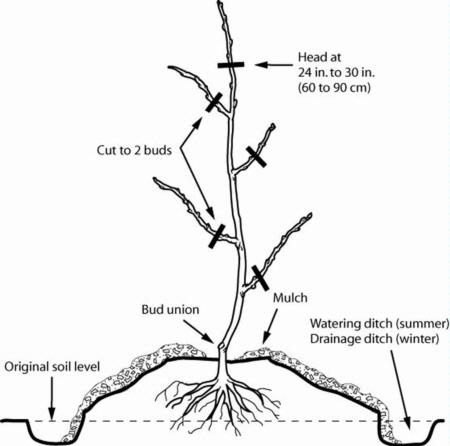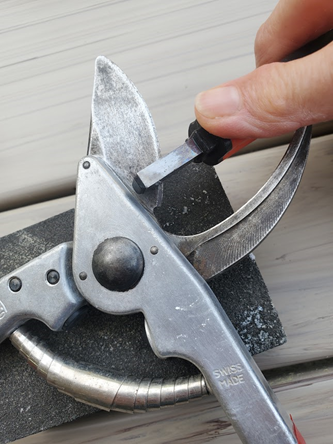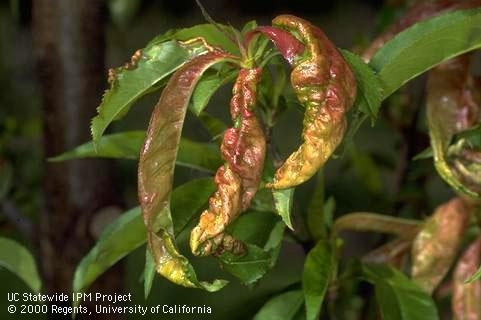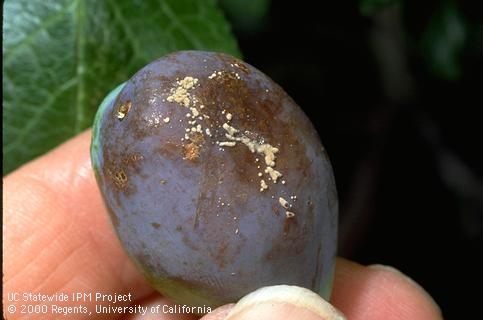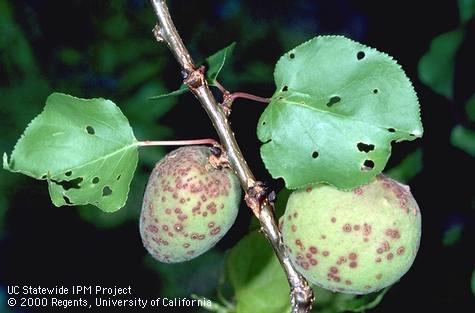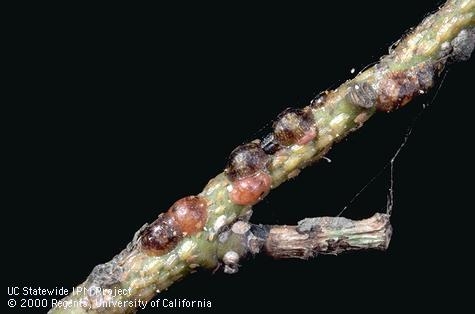- Author: Help Desk Team
Master Gardeners have many clients whose gardens need work beyond the standard mowing, leaf blowing and hedge trimming, such as a new design, nursing an older garden back to health, improving existing irrigation, or doing heavier chores. Since the Contra Costa Master Gardener organization does not make site visits nor perform garden maintenance, our goal is to provide you with options to help you find what you need.
Prior to starting your search for garden assistance, take the time to clearly define the entire scope of your project. Knowing exactly what you need from someone will help to assure that you find the best fit.
Depending on the type of help you desire and the scope of your project, online organizations maintain lists of qualified professionals you can call. Many of the following resource organizations have professionals who are qualified to help with more than just one aspect of garden development and care.
Rescape California is a San Francisco Bay Area nonprofit organization that promotes sustainable landscaping. Qualified landscape professionals must complete a comprehensive training program and use sustainable practices.
https://rescape.memberclicks.net/directory
California Landscape Contractors Association (CLCA) is a nonprofit trade organization of licensed landscape and landscape-related contractors and professionals
https://www.clca.org/find-a-contractor/
Bringing Back the Natives Garden Tour is a local (Alameda & Contra Costa Counties) organization that seeks to educate and encourage the use of California native plants in home gardens. The organization provides contact information for landscape professionals whose gardens have been featured in the annual tours.
https://www.bringingbackthenatives.net/find-a-designer
Association of Professional Landscape Designers (APLD) is an organization that “encourages all members to adhere to a code of professional standards, to actively participate in continuing education, and to be current with state-of-the-art developments and trends throughout the field”.
https://www.apld.org/
American Society of Landscape Architects (ASLA) is the national professional association for landscape architects. Landscape architects typically hold a degree in landscape architecture, covering a broad range including design, planning, grading and drainage, construction, and horticulture.
https://my.asla.org/my-asla/directories/firm_search.aspx
Qualified Water Efficient Landscaper (QWEL) graduates have been trained in water-wise landscape practices including plant selection, irrigation system design and water management. QWEL maintains an online list of certified professionals in the East Bay. While the website lists all professionals under the category of non-residential, many perform residential services.
https://www.qwel.net/map
International Society of Arboriculture (ISA) has a searchable database of certified arborists who are professional tree care providers knowledgeable in the care needed to sustain a tree's life. Their website also has resources showing how to properly care for trees in the urban environment.
https://www.treesaregood.org
And of course, you can ask friends and family for recommendations. Social media such as Nextdoor are also a good place to ask your neighbors.
If you know the maintenance requirements of plants in your yard, you may feel more comfortable hiring someone less skilled to whom you can provide direction. If you know the name of your plant, search the internet for the care it requires. Focus on resources that are reliable like nurseries, growers, horticultural organizations, and, of course, Master Gardeners.
Before you hire someone, contact several potential companies or individuals to ascertain their skills, scope of work, and price before deciding. Check for their business license and proof of insurance as well.
Help Desk of the UC Master Gardener Program of Contra Costa County (SEH)
- Author: Help Desk Team
Winter is an ideal time to plant a fruit tree. Although it requires some patience, success is best using bare root trees. There are many advantages: the trees are lighter and easier to handle; you can get a good look at the roots; they cost less than leafed-out potted trees; the tree is dormant and less apt to be stressed by handling; and the roots don't have to adapt again to new soil. The main disadvantage is that you should get the tree in the ground within a few days after purchase, and it may take 2–3 years before some trees produce fruit.
Fruit trees are an investment and deserve some thoughtfulness to ensure you plant the right tree (appropriate for your climate zone) in the right location (good drainage, minimum 6 hours sun per day). Digging the planting hole before buying the tree will let you check for drainage and an adequate amount (2–3 feet deep minimum) of soil. Here is a website showing how to test soil including drainage: https://marinmg.ucanr.edu/BASICS/SOIL_813/evaluate/
Selecting a healthy bare root tree is critical to get your investment off to a good start. Buy your tree from a reputable nursery that has a wide selection. You don't want a tree with roots that have been in a container too long. These roots may be kinked and will look like they are circling the root ball. These roots tend not to spread and that deprives your tree of needed nutrients.
When preparing the hole for your tree, follow the steps as described in the article linked below to give the roots room to spread and to prevent the graft site from sinking below soil level. Backfill with native soil. As you can see from the diagram below, most of the root ball should be above the original soil level to avoid crown rot. The tree will also settle.
And unless you want a huge tree with more fruit than most families could possibly eat, prune the trunk back to about knee height after planting. This takes some courage, but your tree will reward you with plenty of fruit that is easy to reach. Wait until the weather will be dry for at least several weeks to prune apricots, apriums, and cherries.
Other considerations are pollination requirements, ultimate tree size, chill hours, and disease susceptibility. Pollination is necessary for good fruit production. Some fruit trees have flowers with both male (anthers) and female (pistils) organs and can self-pollinate, such as persimmons and Bartlett pears. Other trees have flowers with both male and female organs but cannot self-pollinate and will require a second tree planted within 100 feet for fruit production, such as many apple varieties and Asian pears. Still others have separate male and female flowers.
Deciduous fruit and nut trees require a certain number of “chill hours” below 45°F to produce. It is important to select only varieties that have chill hour requirements equal to or lesser than the chill hours listed for your area. This reference discusses chill hours and has links to fruit tree requirements for Contra Costa County: https://ccmg.ucanr.edu/files/77176.pdf
It's important to know which diseases and pests a particular fruit tree is susceptible to. For example, apricots and their crosses such as aprium and pluot are prone to infection by the Eutypa fungus and unlike most deciduous trees, should be pruned in late summer before the weather gets damp. Check the reference below. These references have links and information regarding fertilization, pollination, pests and diseases, and characteristics of various fruit trees.
Despite our recent rains, we are still in a drought. Most fruit trees need substantial amounts of water to become established and as they mature and produce fruit. This link has information about drought tolerant fruit trees, shrubs and vines: https://crfg.org/wp-content/uploads/Drought-Tolerant-Fruiting-Trees-Shrubs-and-Vines-Presentation.pdf
Articles with step-by-step planting guides:
• https://sonomamg.ucanr.edu/Food_Gardening/Additional_KG_Articles/Planting_Bare-root_Fruit_Trees/
• https://ucanr.edu/blogs/blogcore/postdetail.cfm?postnum=46072
• https://ucanr.edu/blogs/blogcore/postdetail.cfm?postnum=38836
Excellent video with step-by-step planting guide (UC does not recommend any particular business but this nursery has good videos and does not advertise its products):
• https://www.youtube.com/watch?v=fP-2TGlNo50
More information:
• The Big Picture: https://homeorchard.ucanr.edu/
• Fruit trees for Contra Costa County – great reference to help you decide what to buy, and a pollinating guide: https://ucanr.edu/sites/ccmg/files/228958.pdf
• Fruit tree pests and diseases: http://ipm.ucanr.edu/PMG/GARDEN/fruit.html
Help Desk of the UC Master Gardener Program of Contra Costa County (EAS)
- Author: Help Desk Team
Evenings are growing dark and maybe it's too cold and wet to work in the garden. What better time for tool care? It's also a great time of year to drop some hints to friends and family for those expensive new pruning shears you've been wanting.
Tool care does not come naturally to many gardeners, but it's straightforward and you'll be rewarded with years of good service. Dull, dirty blades can crush plant tissue, damaging the cambium and creating an entry point for pests and diseases.

Here is a summary:
• Clean and sharpen dull blades.
• Lubricate garden tools and repair damaged grips.
• Cleaning can be done with soapy water and a wire brush or steel wool; air dry and apply a light coat of oil to prevent corrosion.
• Tools with wood handles can be sanded and rubbed down with linseed oil.
• File cutting tools, including shovel blades, to sharpen.
• Store tools in a dry, covered area.
• Have your lawn mower serviced to get a jump on spring tasks.
Tools may need some repair in addition to cleaning. Pruners can be taken apart for repair or cleaning.
Cleaning includes removing soil and grit, rust, sap (which could be from an infected canker), and disinfecting. Disinfection is essential to prevent the transmission of disease from one plant to another.
Sharpening does not have to be scary. You can buy a cheap, easy-to-use hand-held carbide sharpener or file from most hardware stores.
After sharpening, all metal surfaces should be oiled to prevent rust.
As you will see from the links below, there is more than one way to clean and sharpen your tools, but the principles are the same. There is some disagreement about disinfecting tools. If you know you used your tool on a diseased plant, debris must be removed first followed by several minutes of soaking in a 10% bleach solution. Lysol or Pine-Sol 10% solutions or 70% alcohol soaks have also been shown to work. Be sure to rinse the bleach solution off to prevent corrosion. Don't forget to disinfect or dispose of the items used to remove infected debris!
Detailed articles on tool cleaning and care:
https://mgsantaclara.ucanr.edu/garden-help/tool-care-tips/
https://ucanr.edu/datastoreFiles/268-723.pdf
Articles on disinfectants:
https://calag.ucanr.edu/Archive/?article=ca.v045n04p21
https://s3.wp.wsu.edu/uploads/sites/403/2015/03/Pruning.pdf
Excellent videos on tool cleaning and care:
https://www.youtube.com/watch?v=AMy_jtmihEQ
https://www.youtube.com/watch?v=vROuLbOuYq0
Help Desk of the UC Master Gardener Program of Contra Costa County (EAS)
- Author: Help Desk Team
Now that the leaves have fallen, or mostly fallen, from your backyard fruit trees, are you wondering whether you should apply dormant sprays?
“Dormant sprays” or “delayed dormant sprays” are terms used for the application of pesticides when the tree is dormant or just coming into bud swell. The pesticide could be a fungicide used to help manage fungal disease or a horticultural oil or oil in combination with insecticides to kill insects.
Don't assume that you need dormant spray. Before reaching for the spray, first determine whether your trees have previously had a disease or serious insect pest problem that can be managed with dormant sprays. Have you already tried all non-chemical recommendations for lessening the problem? Finally, evaluate the amount of damage from the disease or insect pest you experienced in the prior growing season to decide whether a pesticide is really needed.
Fruit tree diseases that can be managed by applying a fungicide dormant spray include peach leaf curl, brown rot, and shot hole disease.
Peach leaf curl affects only peach and nectarine trees. It shows up in spring after the tree has leafed out. Leaves are thickened, curled, and colored red or yellow instead of normal green.
If your tree has had significant peach leaf curl in prior years, dormant spraying with a fixed copper spray just after all the leaves have fallen from the tree (usually December to January in our County) may prevent or reduce the severity of the disease. For information on managing peach leaf curl, see https://ipm.ucanr.edu/PMG/PESTNOTES/pn7426.html/
Brown rot (Monilinia) is a fungal disease that can affect peaches, plum, cherries, apricots, and nectarines. In the spring blossoms on infected trees shrivel and die, often clinging to the twigs. Leaves at the base of infected twigs may also turn brown and die. Fungal spores attach themselves to developing fruit and show up as brown or tan spots on the surface of the fruit.
If your trees had significant fruit loss from brown rot in the prior growing season, a dormant spray of a copper-based fungicide may help. Apply it at the pink bud stage while flower buds are still tightly curled and pink in color. For more information on brown rot, see http://ipm.ucanr.edu/PMG/GARDEN/FRUIT/DISEASE/aprbrownrot.html.
Shot hole (coryneum blight) can affect plums, nectarines, peaches, cherries, and especially apricots. It shows up as small reddish holes on leaf surfaces. Often the holes turn brown and drop out. Fruits may also be infected. Where disease has been severe and cultural steps haven't helped, a fungicide spray following complete leaf drop may be needed. See http://ipm.ucanr.edu/PMG/GARDEN/FRUIT/DISEASE/shothole.html.
Insects that can be managed with dormant sprays of horticultural oils or oils mixed with insecticides include scale, aphids and spider mites. Don't spray unless you have confirmed that the insects are present in damaging numbers and cannot be controlled by other means. Keep in mind that spraying may also kill beneficial insects which are the first line of defense against insect pests. More information on controlling these insect pests can be found at these UC websites: http://ipm.ucanr.edu/QT/scalescard.html, http://ipm.ucanr.edu/QT/aphidscard.html and http://ipm.ucanr.edu/QT/spidermitescard.html.
Before spraying, read and carefully follow the label instructions on the pesticides you use, including wearing recommended protective gear.
If you want to add another fruit tree to your home orchard, stay tuned for an upcoming Blog article on Selecting and Planting Bare Root Fruit Trees to be published in December. If you want to be sure you can get a specific variety of fruit tree, contact your local nursery. The nursery may be able to reserve it for you, or if necessary, special order it for you.
Help Desk of the UC Master Gardener Program of Contra Costa County (TKL)
- Author: Help Desk Team
Christmas cactus will be in bloom soon, available at your local nursery and home and garden store, in many stunning colors to brighten our shorter days. Their bloom time can range from November to January, just when we could use that emotional lift the most.
Many people purchase these beautiful plants for themselves or receive them as gifts. They keep them during their bloom time to brighten their home, and then dispose of them once the bloom is gone. This time, this year, seriously consider caring for them during their off season. It will reward you this time next year with a bigger plant and no new purchase necessary.
Christmas cactus is the common term that nurseries use for any variety of Schlumbergera truncata or Schlumbergera x buckleyi. Plant breeders in their quest for more unique colors have created so many varieties of each that nurseries typically no longer provide the scientific names. One can tell the genetic lineage of their plant though by the shape of the stem segments.
S. truncata has a crab claw-like shape to its flat, fleshy stems which have ‘teeth' along the edges and at the tips of the branches. These are also known as Thanksgiving cacti because they bloom earlier than S. x buckleyi, the true Christmas cactus. S. x buckleyi stems are also flat and fleshy but with smooth scalloped edges.
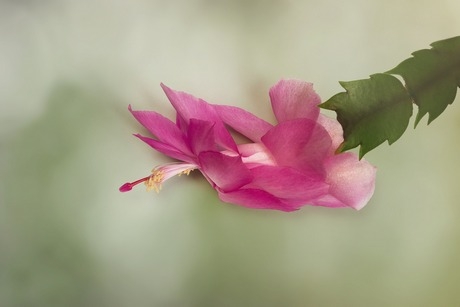
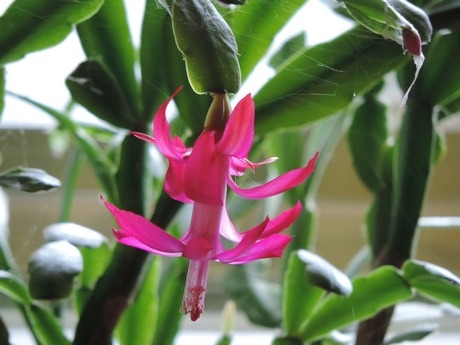
While the lineage is interesting, the care and maintenance is the same for all varieties. The name ‘cactus' gives one the image of a plant that lives in desert sand; this is not that kind of plant. Its native origins are the tropical rainforests of Brazil, where it lives not in soil but in plant debris on other plants, where it would get its water and nutrients from the humidity around it. Due to its native habitat, one would think that caring for it here in our climate would be close to impossible, but not true!
In the home, these cacti require bright but filtered light near a south-facing window. They do best in 50–70 degrees F. During warmer months they can live on a sheltered patio. In order to mimic their native growing conditions, the potting soil should be loose and fast draining (for example, 40% perlite and 60% coconut coir). They like air around their roots, so it should dry out a bit between waterings. To induce bloom for the next holiday season, starting in mid-September, give it cool nighttime temperatures (50–55 degrees F), 12–14 hours of darkness, and reduce watering to compensate for slowed growth.
Schlumbergera species can be quite long lived. Given the right care they can brighten your living space for decades. Detailed care and reblooming instructions can be found at the link below in the UC publication titled Holiday Cacti. If you give one as a gift, include the publication below and hopefully the recipient will be able to enjoy it for years.
https://anrcatalog.ucanr.edu/pdf/8114.pdf
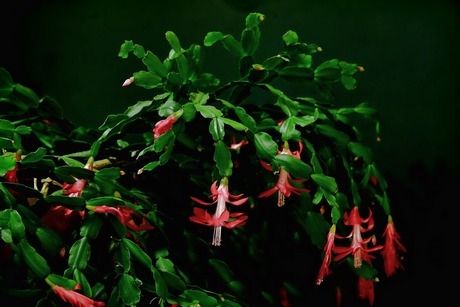
Help Desk of University of California Master Gardener Program of Contra Costa County (EDC)


